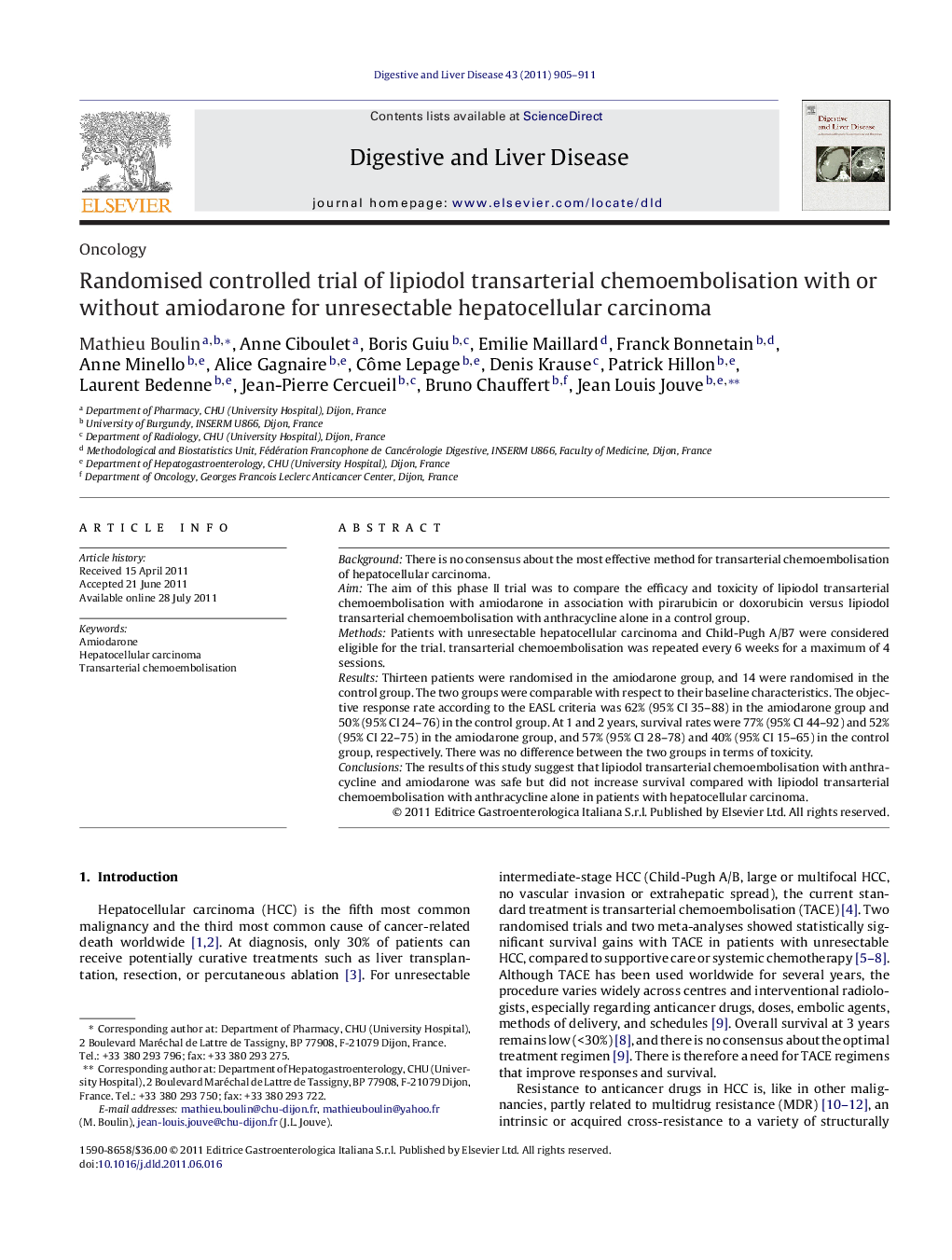| Article ID | Journal | Published Year | Pages | File Type |
|---|---|---|---|---|
| 3262832 | Digestive and Liver Disease | 2011 | 7 Pages |
BackgroundThere is no consensus about the most effective method for transarterial chemoembolisation of hepatocellular carcinoma.AimThe aim of this phase II trial was to compare the efficacy and toxicity of lipiodol transarterial chemoembolisation with amiodarone in association with pirarubicin or doxorubicin versus lipiodol transarterial chemoembolisation with anthracycline alone in a control group.MethodsPatients with unresectable hepatocellular carcinoma and Child-Pugh A/B7 were considered eligible for the trial. transarterial chemoembolisation was repeated every 6 weeks for a maximum of 4 sessions.ResultsThirteen patients were randomised in the amiodarone group, and 14 were randomised in the control group. The two groups were comparable with respect to their baseline characteristics. The objective response rate according to the EASL criteria was 62% (95% CI 35–88) in the amiodarone group and 50% (95% CI 24–76) in the control group. At 1 and 2 years, survival rates were 77% (95% CI 44–92) and 52% (95% CI 22–75) in the amiodarone group, and 57% (95% CI 28–78) and 40% (95% CI 15–65) in the control group, respectively. There was no difference between the two groups in terms of toxicity.ConclusionsThe results of this study suggest that lipiodol transarterial chemoembolisation with anthracycline and amiodarone was safe but did not increase survival compared with lipiodol transarterial chemoembolisation with anthracycline alone in patients with hepatocellular carcinoma.
